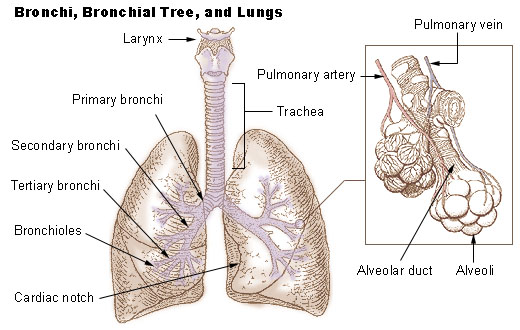Posts Tagged ‘lung capacity’
Lung capacity training
Many years ago when I was about 26 or 27 I went to welding school. It was great fun – welding school is a place where you can yell and swear and spit while you go about your business. Nobody seems to notice.
As part of my training I learned all about respirators and lung protection. I got a 3M mask and wore it about the house. Whenever anybody lit up a cigarette I would don my mask and sit there looking at them.
I had been doing breathing squat sessions to expand my frame for many years.
A year or two later I took a crack at the Army Infantry reserve and got in. During our basic training they had us yelling as loud as we could while marching and carrying on.
Another little trick I had picked up was hypoxic training. Breathing into a plastic bag to expand my carotid arteries.
All of these things combined will greatly increase lung capacity.
Your aerobic performance will increase as a consequence of hypoxic training & respiratory muscle training.
You need to incorporate the 20 rep breathing squat program, hypoxic training with a plastic bag & respiratory muscle training with an expand-a-lung or similar.
1.5 mile run update
My average time on the 1.5 mile run is now 9 minutes 30 seconds. That’s pretty darn good. No sign of the calf problems I was having either.
So how at 40 yrs and 100 kg did I take my time to 9.5 from 12.45 ? Well I recommend HIIT and hypoxic training. I like to do my HIIT on the rowing machine. 15 – 20 minutes max and use that as my pre-workout warmup. Basically the more you put into it the more you get out of it. I also do it instinctively or intuitively rather than timing everything exactly.
As for Hypoxic training it definitely is a very effective method for increasing VO2max and lung capacity but it has to be done in the correct way. For example research studies have shown high altitude training to be ineffective at improving sea level performance.
But I did not say I recommend “High Altitude” training.
What I recommend is short duration hypoxic training at low altitude. So the hypoxia only lasts 20-60 seconds. Its done in intervals and not even necessarily under exercise conditions. You can train your lungs and circulatory system in this way even by simply breathing into a plastic bag for short infrequent intervals. Just be careful not to overdo it and induce dizziness or faintness.
You want to stop just before it quite gets to that. This method is also known as carotid masking as it increases the diameter of the carotid artery to the brain.
This kind of training is familiar to free divers and such, you will find its good to relax your muscles while doing the carotid masking.
Hypoxic sprints can also be performed while swimming both surface and under water.
This brings me to my final recommendation which is the Navy Seals training program by stew smith – this is an incredibly tough training program. I will be following it for the next couple of months and have done it in the past too. After that I intent to try stew’s maximum fitness program which I have not done before – that’s a 52 week cross training program.
Heres’s the link to stew’s site: http://www.stewsmith.com/catalog.htm
Rib Cage Expansion and Increasing Lung Capacity
Some time back I had a check up and the doc told me my lung capacity is in the top percentile.
They get you to blow into that plastic thing and it tells them your lung volume.
As a teen I used to smoke two packs of cigarettes daily and a big pile of reefer. Now after over 20 yrs of teetotaling and non-drug use my lungs are great.

I know my lungs have a good volume because I deliberately trained them. I may do a free PDF report on this at a later stage but for now here’s how:
Breathing squats:
These are done with less weight and higher reps than normal squats.
Take a deep breath, exhale then do squat one,
Take two deep breaths, then do suat two,
Take three deep breaths, then do squat three…
…Continue like this up to ten deep breaths before squat ten. Thats one set.
Also experiment with more than one squat between the breathing try 3-5 if it feels better for you.
You can experiment with holding the breath in during the squat. When I say deep I mean breath it right in and stretch that diaphram.
You can increase the number of sets too, Start with 3-5 sets at the beginning.
Breathing pullover:
Perform as with regular dumbell pullovers but integrate the deep breathing and breath holding as above.
Flyes:
Flyes with dumbells are great for the ribcage and sternum perfomed flat on your back. The emphasis is on stretching and maximum lung expansion rather than strength.
Wind Sprints:
Try some sprinting exercises at your local park. Hill sprints are even better.
Carotid expansion:
There is a technique used by free divers and mountain climbers to enlarge the carotid arteries and improve lung capacity. This involves temporary oxygen deprivation so many recommend vitamin C and E supplements. Simply breath into a plastic bag for several minutes until its full of CO2. This will create a physiological response that over time can permanently increase your vascular and lung capacity. Some people claim it can lead to improved brain function due to greater circulation.
Warning : Dont overdo it, if you feel faint at all your doing it for too long.
Hatha Yoga:
This is known as the science of breath, many of the exercises are similar to carotid expansion but much more elaborate. There are plenty of books on Hatha Yoga.
Spend about six months on your lungs and they will grow.